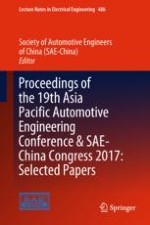2019 | OriginalPaper | Chapter
Effect of Cooling Rate on Microstructure Evolution of Hot Forming High Strength Steel Based on Non-Isothermal Constitutive Model
Authors : Wenfeng Zhu, Guoliang Wang, Chun Xu, Xiaojuan Li
Published in: Proceedings of the 19th Asia Pacific Automotive Engineering Conference & SAE-China Congress 2017: Selected Papers
Publisher: Springer Singapore
Activate our intelligent search to find suitable subject content or patents.
Select sections of text to find matching patents with Artificial Intelligence. powered by
Select sections of text to find additional relevant content using AI-assisted search. powered by
